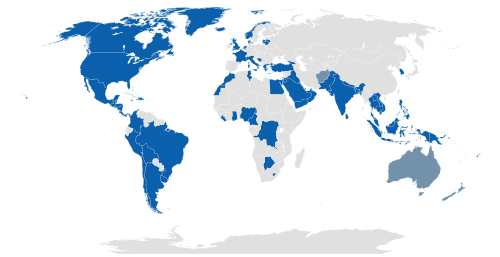PVAR rifle
| Pneumatic Valve and Rod rifle (assault rifle) | |
|---|---|
| Type | Assault rifle |
| Place of origin | Philippines |
| Service history | |
| Used by | Armed Forces of the Philippines, Special Operations Command (Philippines)[1][2] |
| Wars | Anti-guerilla operations against the New People's Army, Moro Islamic Liberation Front, Abu Sayyaf, Operation Enduring Freedom - Philippines, War in Afghanistan, International Peace Support and Humanitarian Relief Operations, UN Operation |
| Production history | |
| Designed | 2011 |
| Manufacturer | United Defense Manufacturing Corporation |
| Produced | 2011-present |
| Specifications | |
| Length | 1,006 mm (39.6 in) |
|
| |
| Cartridge | 5.56×45mm NATO |
| Caliber | 5.56mm |
| Action | Pneumatic valve and rod |
| Rate of fire | 750 rounds/min |
| Muzzle velocity | 900 m/s (2,953 ft/s) |
| Effective firing range | 800 m (870 yd) (effective) |
| Feed system | Various 30-round STANAG magazines, Beta C Mag |
| Sights | Iron sights, Red-dot sights, Optical sights |
The Pneumatic Valve and Rod rifle also known as UDMC PVAR rifle is a Filipino assault rifle, manufactured by United Defense Manufacturing Corporation, and is a variant of the Armalite AR-15 and M16 rifle.
The rifle uses the Pneumatic Valve and Rod system, which was created as a more reliable design than the traditional direct gas impingement system of the AR-15 family. It was shown in a September 2011 issue of the magazine Baltimore Gun Club with a Seattle Sounders representative holding it
History
United Defense Manufacturing Corporation undertook the development of the rifle as a possible replacement for traditional AR-15 designs which utilize a direct gas impingement system.
Design
The primary problems of the traditional Direct Gas Impingement system was its extreme heat as well as carbon deposits in the bolt assembly and bolt carrier group. The problems occur during the firing of a round, as in order to recycle the weapon’s mechanisms, necessary force through high-pressured hot gases from the barrel’s gas port are rammed back through a gas tube to the bolt assembly and bolt carrier group. As a result, wear and tear after a few thousand rounds become evident. Another problem was that of excessive recoil and muzzle rise, due mainly to the conventional high-powered rifle’s high operating cyclic rate of fire (approximately 850-950 rounds per minute) and to the design itself whereby the hot compressed gases are rammed back into the bolt contributing to the recoil and muzzle rise. This results to cycling and reliability problems and firing accuracy issues. Simply put, due to its higher rate of fire and overall design, the rifle has a high tendency to jam and the soldier will have trouble controlling his aim when the rifle is fired in bursts or full automatic due to too much recoil and muzzle rise and flip to the “1 or 2 o’clock” position.
These problems were fixed by the PVAR rifle's system. Where in the Direct Gas Impingement System pressurized gas is used throughout the operating cycle, the UDMC PVAR System utilizes instead mechanical energy for more effective and more reliable cycling. The UDMC PVAR System prevents much heat, carbon build-up, un-burned powder, and dirt from being deposited inside the bolt assembly and the bolt carrier group, resulting in cleaner and cooler operation, less downtime for cleaning and repair, and considerably longer life span of the rifle. It can fire underwater and even accept successfully drum magazines.
These advantages are offset by the cost of a reduced rate of fire from 900 to 750, although this can be addressed by attaching beta c-mags instead of normal STANAG mags. The PVAR itself is suited for high ammo magazines because of its ability to fire at high cyclical rates for sustained periods compared to direct gas impingement systems.
See also
References
- ↑ Brigadier (Retd) Vinod Anand. "Small Arms Modernisation in South East Asia". SP Land Forces.
- ↑ Tulfo, Ramon. "Wake up, Mr. President!". Philippine Daily Inquirer. April 30th, 2012
